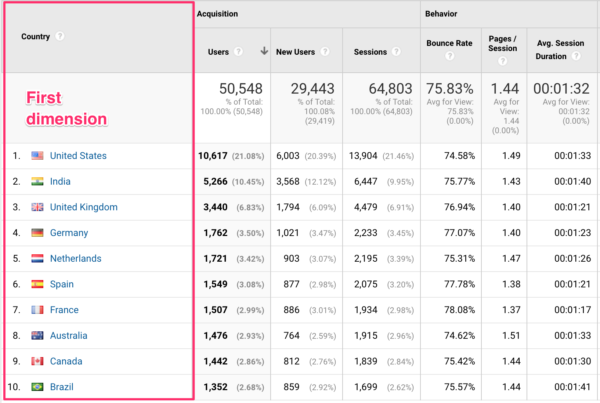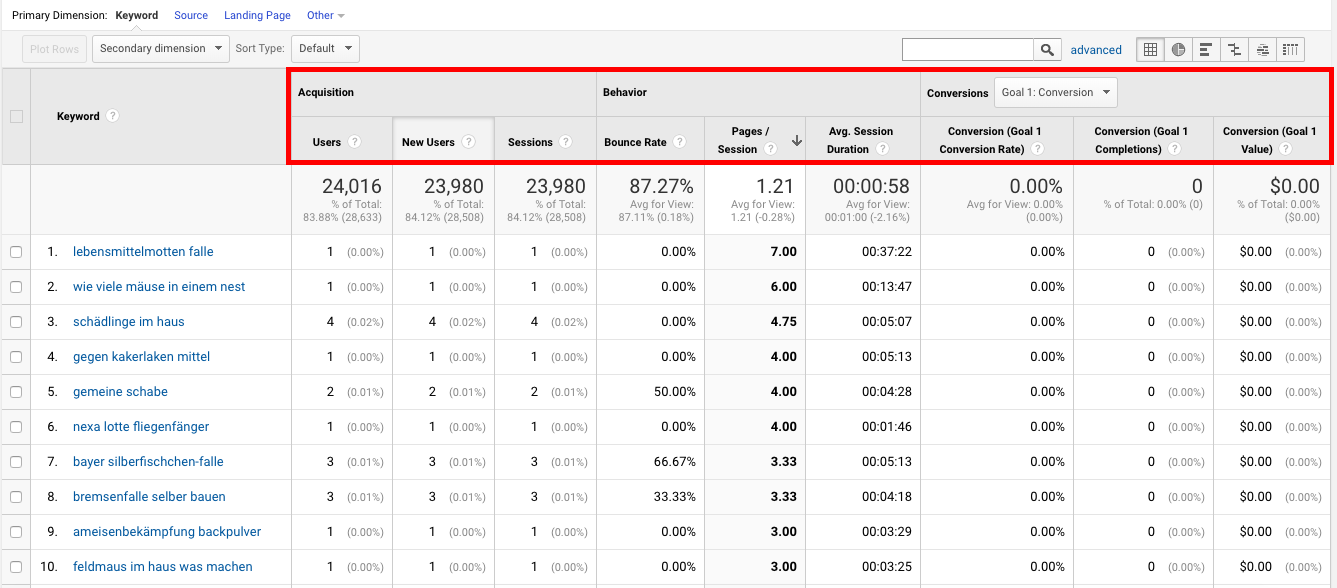Open Advanced Insights with Google Analytics Secondary Dimension Tools
Open Advanced Insights with Google Analytics Secondary Dimension Tools
Blog Article
Optimizing Your Digital Approach With Second Measurement Analytics: a Comprehensive Guide
In the realm of electronic method, the utilization of second dimension analytics can supply a profound understanding of customer habits and website performance. By diving deeper into the layers of information beyond the primary metrics, businesses can reveal valuable understandings that pave the method for strategic decision-making and improved efficiency.
Comprehending Second Dimension Analytics
Recognizing Secondary Dimension Analytics gives an important understanding into the innovative analytical tools made use of in contemporary data analysis methods. These analytics delve deeper than main measurements, offering a much more comprehensive understanding of data patterns and patterns. By including secondary dimensions, analysts can section and filter information to reveal covert insights that might not be apparent with key analysis alone.
Additional Dimension Analytics makes it possible for an extra granular examination of data by presenting extra specifications that can be used to the key dimensions - secondary dimension. This approach allows for an extra nuanced evaluation of various data points, resulting in a much more detailed analysis of complex datasets
Additionally, Additional Measurement Analytics plays a considerable function in improving data visualization methods. By integrating additional dimensions into graphes, such as graphs or charts, analysts can offer information in an extra insightful and thorough fashion, making it less complicated for stakeholders to realize crucial understandings and make educated choices based on the data presented.

Executing Second Dimensions Properly
Making use of second measurements tactically improves the depth and precision of information evaluation procedures, enabling much more accurate insights and educated decision-making. When carrying out second measurements efficiently, it is important to first recognize the crucial metrics that line up with your specific goals and goals. By selecting one of the most appropriate secondary measurements, such as demographics, habits, or technology, you can customize your analysis to remove significant insights.
In addition, organizing and structuring your second measurements in a sensible way within your analytics system can enhance the data analysis process. secondary dimension. This entails categorizing dimensions based upon their relationships and value to the main metrics being assessed. Producing custom reports or control panels that integrate these second dimensions can additionally help with an extra extensive understanding of customer interactions and actions
Furthermore, routinely examining and adjusting your additional measurements based on the advancing needs of your electronic approach is vital for keeping the relevance and efficiency of your data analysis initiatives. By continually optimizing making use of second measurements, you can take full advantage of the utility of your analytics tools and drive educated decision-making within your company.
Analyzing Data for Actionable Insights

To start the procedure of assessing information for workable understandings, it is necessary to establish clear objectives and essential performance signs (KPIs) that line up with the organization's goals. By defining what success looks like for the particular metrics being analyzed, it ends up being much easier to recognize meaningful patterns and fads her response that can inform decision-making.
Furthermore, making use of devices such as division and contrast evaluation can supply extra context to the data, allowing for more nuanced insights to be drawn. By breaking down information right into smaller, much more manageable subsets, companies can discover concealed chances and areas for improvement that might not be evident when checking out the data as a whole.
Optimizing Digital Technique With Searchings For
Enhancing digital approaches with actionable understandings amassed from data evaluation is critical for attaining ideal performance in today's affordable landscape. When valuable searchings for have been extracted from the data, the following step is to leverage these insights to optimize electronic methods successfully. One vital aspect of this optimization procedure is the recognition of trends and patterns that can guide decision-making and resource appropriation.
By evaluating the information findings, businesses can identify locations of stamina and weak point within their digital method. This information can after that be used to improve marketing projects, enhance individual experience, and drive total performance improvement. For example, if the data discloses a particular market group that is extremely involved with particular types of web content, companies can customize their strategies to much better target and satisfy this target market sector.
Furthermore, enhancing electronic approach with searchings Your Domain Name for additionally entails continual monitoring and analysis to guarantee that the executed modifications are creating the desired results. By iteratively refining strategies based on data-driven insights, businesses can stay ahead of the competition and adjust to the vibrant electronic landscape successfully.
Determining Success and Iterating
Measuring success in digital strategy implementation involves assessing vital efficiency signs to evaluate the effectiveness of techniques and strategies deployed. This evaluation is critical in establishing the influence of the digital initiatives on the total organization goals. By tracking metrics such as website web traffic, conversion rates, click-through rates, and involvement levels, businesses can analyze the efficiency of their digital projects and make data-driven choices for improvement.
As soon as the data has actually been gathered and evaluated, it sites is important to repeat on the techniques based on the understandings gained. This repetitive process entails making adjustments to the electronic strategies to maximize efficiency continuously. By recognizing what is working well and what requires enhancement, businesses can improve their digital method to improve results. This intermittent technique of gauging, evaluating, and iterating is basic to optimizing the effectiveness of digital campaigns and making sure that they straighten with the organization's objectives and goals. Inevitably, continuous tracking and refinement are vital to staying competitive in the ever-evolving electronic landscape.
Final Thought
In verdict, integrating additional dimension analytics into your electronic strategy can enhance and provide valuable understandings decision-making. By successfully carrying out and examining data, companies can optimize their electronic methods for success.
Understanding Secondary Measurement Analytics offers an important insight into the advanced logical tools made use of in contemporary data evaluation methods. These analytics delve much deeper than main dimensions, supplying a much more comprehensive understanding of information patterns and trends. By including additional measurements, experts can section and filter data to discover hidden understandings that may not be noticeable with main evaluation alone.
Using second measurements tactically enhances the depth and precision of data evaluation processes, enabling for more exact insights and educated decision-making.Additionally, arranging and structuring your secondary measurements in a sensible manner within your analytics system can simplify the data interpretation process.
Report this page